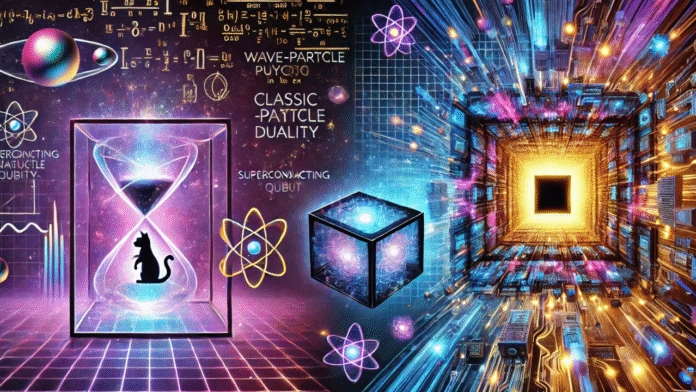A few years ago, the idea that quantum computers could simulate the complex interactions inside particle colliders felt like science fiction. Today, it’s fast becoming a reality—and the implications are enormous. We’re not just talking about progress in computational power. We’re witnessing the dawn of a new era in particle physics, one where machines can help us peer deeper into the universe than ever before.
A New Lens for an Old Mystery
The universe hides its secrets in the smallest particles and the most intense collisions. Traditional computer simulations have helped us understand some of these processes, but only to a point. The problem? Conventional systems are limited when it comes to dynamically modeling high-energy events in real time.
That’s where quantum computing comes in. Teams of researchers from Google and the University of Innsbruck have recently demonstrated something that once seemed impossible: using quantum machines to simulate how energized particles behave inside quantum fields. Imagine being able to “watch” the invisible tug-of-war inside an atomic nucleus—not as a still frame, but as a full sequence. That’s exactly what these teams are doing.
I remember speaking with a colleague at Arrow PC Network, where we’ve seen firsthand how Quantum computers are reshaping enterprise and scientific IT landscapes. The excitement is tangible. This isn’t just about faster calculations—it’s about solving problems that couldn’t even be approached before.

Real-Time Simulation of String-Breaking
At the heart of these experiments lies a phenomenon known as string-breaking—a key process in new particle physics. It’s how particles like quarks behave when they’re pulled apart, creating a sort of “string” of energy that eventually snaps, releasing new particles. Conventional systems can simulate this in snapshots, but quantum machines now allow us to follow the full dance.
Both Google’s Sycamore and QuEra’s cold-atom quantum platforms were used in these pioneering experiments. The two research teams simulated two particles tethered in a quantum field, observing them as they separated and the connecting energy string broke.
It’s a scene that plays out inside particle colliders like CERN’s Large Hadron Collider every day, but until now, we’ve only seen the aftermath. This breakthrough could let us start from the collision itself and explore the process as it unfolds something computer simulations alone have never achieved.
From Theory to Transformation
The simulations don’t just align with the standard model of physics—they push right up against its edge. According to Jad Halimeh from the University of Munich, just a slightly more powerful quantum computer could take us beyond current models and into unexplored territory.
Let’s be clear: we’re still in early days. These are two-dimensional simulations. Expanding them into full three-dimensional models will require stronger hardware, smarter algorithms, and relentless refinement.
That’s where enterprise leaders and IT innovators like Arrow PC Network come into play. As organizations navigate this technological leap, IT Services by Arrow PC Network are helping research institutions, labs, and advanced computing centers scale infrastructure, integrate quantum workflows, and stay ahead of the curve.
This isn’t just academic. Quantum simulation techniques are already influencing how we study exotic quantum materials—applications with real-world relevance for cybersecurity, chemistry, and materials science.

A Cautious Optimism Rooted in Progress
Pedram Roushan, one of the lead researchers at Google, said it best: there’s no silver bullet here. Progress will come from both better hardware and better programming. And while there’s no rush to declare victory over classical computing just yet, it’s clear that quantum systems are catching up fast.
Back at Arrow PC Network, we’re watching this space closely. Our belief is simple: organizations that embrace Quantum, not just as a concept but as a strategic direction, will be the ones leading the next wave of digital innovation.
Because when quantum computers can recreate the origins of matter and energy, what’s stopping them from reshaping the very nature of business, security, and science?


